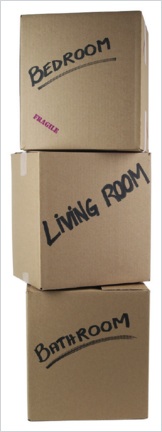
by Anne Murray-Randolph, Gray Lady Group
One of the biggest impediments to finding a new home is fear. Among mature adults, there are four big fears: fear of a loss of independence, fear of the unknown/change, fear of giving up our things (stuff), and the fear of running out of money. These fears frequently cause mature adults who would benefit significantly from a move, to put it off indefinitely.
Loss of Independence
As we age, we lose the ability to care totally for ourselves and our homes in ways big and small. Cleaning, dressing, shopping, paying bills, driving and maintaining our homes becomes more difficult. This causes a sense of loss of independence.
Fear of Change
Our ability to adjust to new things/people is reduced as we age. In his book “Moving in the Right Direction”, Bruce Nemovitz shared research that he did with over 700 seniors, and the fear of change was the top reason that people didn’t make a move that would enhance their lives.
Fear of Letting go of “stuff”
We fear letting go of some or a lot of our “stuff” – not really the stuff, but the memories that go with all the stuff. Seniors have stories and memories that go with virtually everything, so sorting and making decisions about what will be kept, sold, given away is very difficult.
Running out of money
Finally, among the big four fears is the fear of running out of money and ending up in a nursing home. For many, nothing could be worse. In a study done by Clarity and the EAR Foundation, seniors feared going to a nursing home more than they feared death!
So how do we help ourselves and perhaps our friends/parents deal with these fears so that we/they can make the right move to support current life needs? Overall, patience, caring, thoughtful evaluation, and good listening are critical.
Evaluate the current living conditions
How much is the house supporting or becoming a burden, as well as how safe an environment it is to live in. Reducing responsibilities for caring and maintaining a home actually can increase independence by providing more time to be with friends, and family and doing things the individual enjoys. In the Nemowitz research, 42% of seniors responding said they were considering a move due to the maintenance issues with their current home.
The size and layout of the home can also be a hindrance to independence. Stairs can be both difficult and dangerous. Large layouts mean longer distances to travel from one side of the house to the other, particularly if a walker or cane is required. Falls are the number one cause of injury for people over age 65. However, many homes can be remodeled to be much safer and more accommodating for the seniors who desire to age-in-place.
Creating a positive story about change
If you are the child of a senior, your parent will not see you as the person who “knows”; that was their role with you forever. You need to help change the story. Their story is of loss and restrictions. You need to help them see a different story – one of more freedom, more friends, an easier life without so many responsibilities. Visits to a variety of places can help. See if the senior can stay for a “respite” visit –a couple of days to get an idea of what living and the activities are like, etc.
For sorting through “stuff” plan lots of time
It frequently took them 30-50 years to accumulate, so it can’t be sorted without time for remembering. Plan days or weeks for this activity. If you know the floorplan of the next home, use that to lay out where the key pieces of furniture will go. If not, make a list of things the person feels are essential to feeling at home in a new place. It can be a fun and forward-looking activity. Senior Move Managers can be very helpful.
Careful financial planning
Address the fear of running out of money through careful financial planning. Retirement is an expensive business that requires a careful analysis of your family’s longevity and future resources. A good financial planner is a great place to start. They can help assess the current and expected costs of both a current home and a future home options. Understanding what Medicare does and does not cover is critical.



